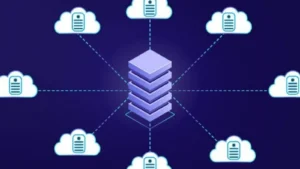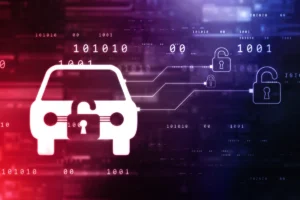Mixed Reality (MR) in Education: Enhancing Learning Experiences

In the realm of education, Mixed Reality (MR) is emerging as a transformative technology, blending the physical and digital worlds to create immersive and interactive learning experiences. MR encompasses both augmented reality (AR) and virtual reality (VR), offering a spectrum of experiences from overlaying digital information on the real world to creating entirely virtual environments. This blog explores how MR is enhancing education, its benefits, practical applications, and the challenges of integrating this technology into the educational system.
Understanding Mixed Reality (MR)
Mixed Reality (MR) merges real and virtual worlds to produce new environments where physical and digital objects coexist and interact in real-time. Unlike AR, which adds digital elements to the real world, or VR, which immerses users in a completely virtual environment, MR allows for a seamless interaction between both realms. Devices such as Microsoft HoloLens and Magic Leap are leading the way in providing MR experiences.
Key Benefits of MR in Education
- Immersive Learning Experiences MR provides highly immersive experiences that engage students more effectively than traditional teaching methods. By interacting with 3D models, simulations, and virtual environments, students can gain a deeper understanding of complex concepts. For instance, biology students can explore the human body in 3D, examining organs and systems in a way that textbooks cannot offer.
- Enhanced Engagement and Motivation The interactive nature of MR makes learning more engaging and enjoyable. Gamification elements can be integrated into lessons, making education fun and motivating students to participate actively. This increased engagement can lead to better retention and understanding of the material.
- Personalized Learning MR allows for personalized learning experiences tailored to individual student needs and learning styles. Adaptive MR applications can provide customized feedback and adjust the difficulty of tasks based on the student’s performance, helping each learner progress at their own pace.
- Collaboration and Social Interaction MR supports collaborative learning by enabling students to work together in shared virtual spaces. This can foster teamwork and communication skills as students engage in group projects and problem-solving activities, regardless of their physical location.
- Practical Skill Development MR can simulate real-world scenarios and provide hands-on practice in a safe and controlled environment. Medical students, for example, can perform virtual surgeries, while engineering students can experiment with virtual prototypes. This experiential learning helps students develop practical skills and confidence before applying them in real life.
Practical Applications of MR in Education
- Virtual Laboratories MR enables the creation of virtual laboratories where students can conduct experiments and explore scientific concepts without the limitations of physical lab space or resources. These virtual labs can simulate hazardous experiments safely, allowing students to learn without risks.
- Historical and Cultural Exploration History and cultural studies can be brought to life with MR by recreating historical events, locations, and artifacts. Students can virtually visit ancient civilizations, explore historical landmarks, and interact with cultural artifacts, gaining a deeper appreciation and understanding of the subject matter.
- Language Learning MR can enhance language learning by creating immersive environments where students can practice speaking and listening skills. Virtual scenarios, such as ordering food in a restaurant or asking for directions, provide contextual practice that can improve language proficiency and confidence.
- STEM Education MR can make abstract STEM (Science, Technology, Engineering, and Mathematics) concepts tangible by visualizing complex theories and processes. For example, students can manipulate 3D molecular structures in chemistry, explore mathematical models, and simulate physics experiments, making learning more intuitive and accessible.
- Special Education MR can be particularly beneficial for special education by providing tailored learning experiences that accommodate various disabilities. Interactive MR applications can help students with autism develop social skills, assist those with dyslexia in improving reading abilities, and offer alternative communication methods for non-verbal learners.
Challenges and Considerations
- Cost and Accessibility One of the primary challenges of integrating MR in education is the cost of the required hardware and software. MR devices and applications can be expensive, and schools may struggle to allocate budgets for this technology. Additionally, ensuring that all students have equal access to MR experiences is crucial to prevent widening the digital divide.
- Technical Skills and Training Educators need to be proficient in using MR technology to effectively integrate it into their teaching. This requires comprehensive training and ongoing support to help teachers develop the necessary technical skills and confidence. Institutions must invest in professional development programs to ensure successful adoption.
- Content Development Creating high-quality, curriculum-aligned MR content can be time-consuming and resource-intensive. Educators and developers must collaborate to design engaging and educational MR experiences that meet learning objectives. Moreover, content must be regularly updated to keep pace with curriculum changes and technological advancements.
- Health and Safety Concerns Prolonged use of MR devices can cause eye strain, motion sickness, and other health issues. It is important to establish guidelines for safe and healthy use of MR in the classroom, including appropriate session lengths and breaks. Additionally, ensuring that MR experiences are accessible to students with disabilities is essential for inclusive education.
- Privacy and Security As with any digital technology, MR applications must adhere to strict privacy and security standards to protect student data. Educators and institutions need to implement robust policies and practices to safeguard sensitive information and ensure compliance with relevant regulations.
Mixed Reality (MR) has the potential to revolutionize education by creating immersive, engaging, and personalized learning experiences. From virtual laboratories and historical explorations to language learning and special education, MR offers a wide range of applications that can enhance teaching and learning across disciplines. However, addressing challenges related to cost, accessibility, technical skills, content development, health, and privacy is crucial for the successful integration of MR in education. As technology continues to evolve, the adoption of MR in classrooms will likely grow, paving the way for a more interactive and effective educational experience.



